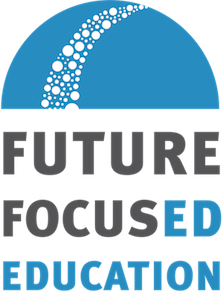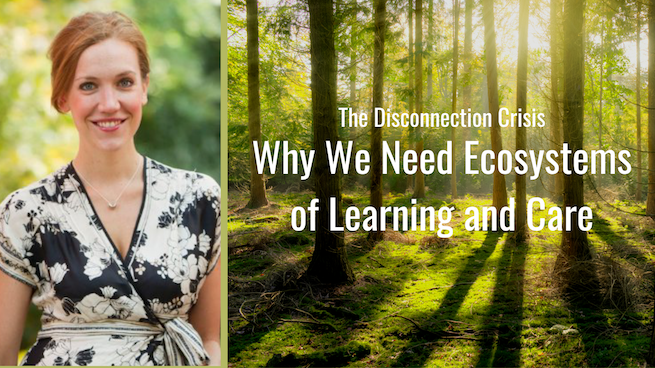Why We Need Ecosystems of Learning and Care to Address the Disconnection Crisis
At the onset of COVID-19—seemingly a lifetime ago—I wrote about the need for hope and innovation. "My hope is that our collective grief during this pandemic will not keep us from the greatest opportunity for creative rebirth so far this century. My hope is that radical creation and innovation will come from radical disruption: the wrenching separation of parts and the loss of life as we know it that, while inevitably and necessarily painful, create the space for something new."
Seven months later, I reflect on the imperative of hope with even greater urgency, because I believe that if we do not act with courage and purpose, this pandemic will cost us the genius, potential, and lives of our youth.
What’s the Danger of Disconnection?
Before COVID-19, there were 4.6 million opportunity youth in our country: young people between the ages of 16 and 24 who were not engaged in school or in the workforce. Pre-pandemic, this meant that one in nine young people in our country was disconnected. The number was higher for youth of color; studies estimated that 22.5 percent of Black youth ages 16 to 24 were disconnected. Now, in the midst of crises in public health, education and the economy, we watch these numbers balloon. Some estimate that there are eight million opportunity youth today—nearly twice the number as there were before COVID.This means that as many as 20 percent of young people today are neither enrolled in school nor engaged in the workforce. Here is our quandary: if we want to emerge from COVID-19 as a nation that is better, stronger, and in closer alignment with our ideals, we must understand and address the crisis of disconnected youth.
COVID-19 creates a “new normal” that is undeniably extreme. What we are experiencing—stay at home orders, the loss of in person schooling and work—is difficult to comprehend. But I would argue that however bizarre, this pandemic is more of a magnifying glass than a trick mirror. The impacts of COVID-19 are the result not only of a crisis, but also of underlying conditions: deep fissures in our public services and institutions that predated the pandemic, as well as intentional designs within these systems that were put in place decades or centuries ago to maintain a divided social order. We can’t expect a number like eight million opportunity youth to decline on its own when the pandemic fades. We can’t even count on short-term solutions or stopgaps. We need to understand why young people have always been disconnected, and design for a very different future in which they are reconnected—for good.
How Did We Get Here?
Why have youth been disconnected? I think there are three core dynamics driving youth disconnection—dynamics that were always at play, and that are exacerbated in this moment in time.
- Relationships engage young people in their learning and propel their advancement. And relationships, like many resources, are inequitably distributed. Teacher turnover is disproportionately high in schools serving low-income students of color, limiting youth’s opportunity for lasting connections. America’s teaching workforce is disproportionately white, meaning that students of color are unlikely to have the opportunity to form relationships with adults who share their identities and experiences. Outside of schools, young people in the top economic quintiles count double the number of non-family members in their network as those in lower quintiles, and count double the number of CEOs, politicians, and professors in their networks. Young people have been disconnected because of inequitable access to relationships, and this disconnection is exacerbated by the dynamic, as young people are kept at home due to loss of in-person learning.
- Learning is disconnected: disconnected from youth interest, disconnected from the real world, and disconnected from the knowledge and skills that are actually required to promote success and mobility in the future of learning and work. Young people have been disconnected because their learning feels irrelevant. The shift to virtual learning has further limited relevance, connection, and application, causing more young people to opt out or drop out.
- In some cities, 60 percent of youth have been directly or indirectly exposed to violence, and more than half have experienced assault. These numbers are highest for youth of color, girls of color, and LGBTQ youth. Trauma contributes to innumerable challenges, including impacts on mental health, connection, and learning. Young people have been disconnected because of trauma and mental illness. COVID-19 has exacerbated many forms of personal, family, and community trauma and increased mental illness, while further isolating young people from supportive relationships, networks, and resources that could support their healing.
In “normal” times before this pandemic, we would most likely turn to schools as the primary—if not the sole—source of solutions to gaps in relationships, engagement, and mental health. We’d ask schools to lower their counselor to student ratios, implement better social emotional curriculum, move to project-based learning and provide better teacher training. But today, in this moment, the loss of in-person schooling forces us to see that schools cannot do all these things alone. This is a limitation, and also an inspiration. If we acknowledge that schools can’t go it alone, then can—and must—begin to take collective responsibility for re-engaging and re-connecting youth.
What Does an “Ecosystem” Really Look Like?
In my recent work A Promise for Equitable Futures; Enabling Systems Change to Scale Educational and Economic Mobility Pathways, I describe a future in which young people no longer experience learning as a series of linear, time-bound experiences within the four walls of school, but instead navigate learning as an ecosystem. This would look like a connected network of relationships and experiences organized around individuals rather than institutions, in which young people would chart their own experiences flexibly and fluidly across a variety of settings and providers. Even before COVID-19, trends in technology and society were beginning to push education in this direction. Learning, like many activities and services, was becoming more personalized and decentralized. It was also becoming more connected—not necessarily to institutions, but to personal purpose and community. The onset of COVID is accelerating this shift; today, more than any other time in our nation’s recent history, it is incumbent upon all of us to move away from a system of schooling toward an ecosystem of cooperative learning and care.
An ecosystem of learning and care would not replace schools. Rather, it would engage schools in partnership with community organizations, employers, intermediaries, funders, coaches, mentors, and families. These players and partners would come together to support connection, relevant and applied learning, and wellness.
We can see this happening already, today. Beyond12 has created a COVID-19 coaching corps to provide students with virtual college mentorship and support. Future Focused Education has brought their internship model virtual, allowing young people to continue with applied, real-world learning. The Enduring Ideas initiative is funding and connecting place-based innovations that support relevant social emotional learning and wellness: solutions like Joy as Resistance, Empower Community High School, Detroit Heals Detroit, and Dreamhouse EWA Beach.
It gives me hope to see that innovations, born of a crisis, are demonstrating new ways to connect, engage, and heal youth. It also makes me wonder: what will it take to do this work in more places, at a scale that is commensurate with the need, and in a way that can be integrated into the mainstream and sustained far beyond the end of the pandemic?
How Do We Make Education Ecosystems Sustainable?
I think that there are at least five enabling conditions for creating and sustaining cooperative ecosystems of learning and care.
- Collective Mindset
Ecosystems thrive on cooperation and coordination. This requires a mindset shift away from siloed operation and toward collective impact. Students, families, teachers, leaders, funders, employers, and politicians can begin to embrace the idea of collective responsibility connecting, engaging and healing youth. - Facilitation and Support
Ecosystems require thoughtful coordination: cultivating and convening stakeholders, fostering alignment, and facilitating shared learning and development. Intermediaries like Future Focused Education, Youthforce NOLA, and many others around the country play vital roles. - Continuous Navigation
When we ask young people to navigate a more diverse landscape of resources and opportunities, we must also provide them with lasting and relevant sources of support. Reschool Colorado has piloted several innovative models of place-based learner advocate networks. - Enabling Tech
Technology is an enabler of learning and connection during and beyond a pandemic. Today, high-quality virtual learning is a condition for success. In the future, transparent data systems and comprehensive learner records, i.e. secure and portable portfolios of a learner’s achievements, will become increasingly important for anywhere anytime learning and student advancement. - Equitable Policy
Sustaining learning ecosystems will require changes to policy, as I lay out in A Promise for Equitable Futures. These include policies that promote collaboration and coordination between diverse learning providers, that enable anywhere anytime learning and, critically, that seek to promote equitable COVID-19 recovery.
Radical innovation comes from radical disruption. While we grieve the losses we have already incurred, we have reason to hope that they will help give rise to lasting changes in our nation’s approach to learning and youth development.
.
Dr. Katherine Casey is an author, educator, and specialist in competency-based learning. She is a founding member and director of the Imaginarium Innovation Lab in Denver Public Schools, and a graduate of Education Leadership at Harvard University. Read her newest publication A Promise for Equitable Futures here.


